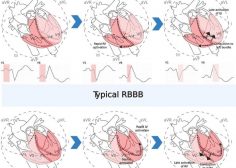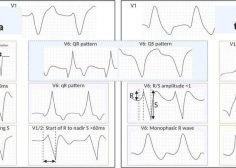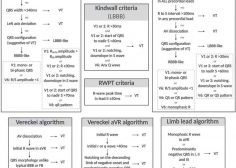Abstract
A wide QRS complex tachycardia (WCT) is defined as a tachycardia with QRS duration of >120 ms. Distinguishing between the different potential causes of a WCT can have important implications, particularly in terms of determining the urgency of treatment, deciding between different antiarrhythmic drugs and risk stratification for sudden cardiac death. Potential differential diagnoses for a WCT include ventricular tachycardia (VT), supraventricular tachycardia (SVT) with aberrant conduction, SVT with antegrade conduction via an accessory pathway (AP), ventricular pacing and ECG artefact (box 1). In most cases, paced ventricular activation and ECG artefact can be excluded with relative ease based on the ECG features and background clinical history. On the other hand, distinguishing VT from SVT may represent a challenge. In this regard, sufficient knowledge of the background history and detailed analysis of the ECG are central to making an accurate diagnosis.1 2 This article will outline the approaches and algorithms for distinguishing between different forms of WCT with a particular focus on ECG characteristics to distinguishing VT from SVT.





